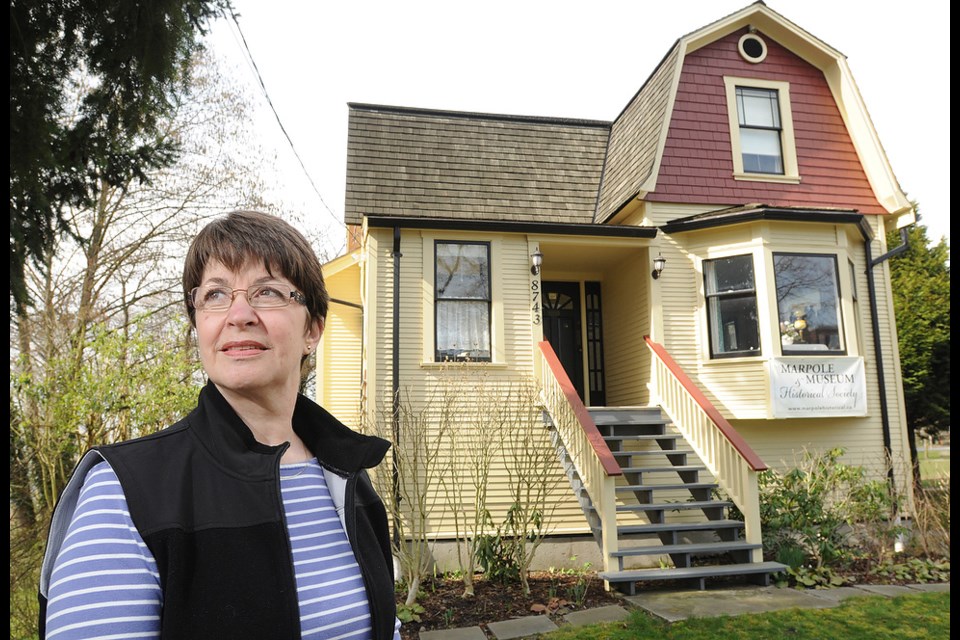Property: Colbourne House, 8743 Southwest Marine Dr.
The Marpole Museum and Historical Society restored the Colbourne House to illustrate early 20th century life in one of Vancouver’s oldest neighbourhoods. Small by modern-day standards, the 900-square-foot working class Dutch colonial home features three bedrooms upstairs and a kitchen, living room, dining room and bathroom downstairs.
Tom Thomas built the house in 1912. The Colbournes bought it in 1936. Henry and May raised three children in the home — Evelyn, Myrna and Neil — on a CPR conductor’s salary. The Colbournes sold the property in 1982.
The person who bought the property soon moved away and it fell into disrepair. The city took over the land and planned to run a road through it but the plans fell through.
In 1994, the city leased the house to the Marpole Museum and Historical Society for 60 years.
Founded by Val Anderson, a United Church minister and former Liberal MLA, the society has spent years restoring Colbourne House, which officially opened in 2005.
The Colbournes’ daughter, Evelyn Bulteel, is former society director who died about five years ago. Bulteel donated many items owned by her parents to furnish the home, including a wringer washing machine that her mother used until she moved out in 1982.
“We have a lot of other things that have been donated from people within the community and some of them are turn-of-the-century,” explained society chairperson Yvonne Robinson.
“Some of them were war letters, and wedding dresses from that period when they were all hand-made. We’ve been very, very fortunate in what we’ve received and we try to display it so that people have an idea what it was like then.”
Students often tour the home.
“We have a cranking phonograph player, we have the old radios, we have the old telephones. There aren’t cupboards in every bedroom and the cook stove heated the house,” Robinson added. “There’s none of the conveniences that [students know]. It’s an awakening, an awareness of where we’ve come from to where we are.
As we explain it to the kids, the house doesn’t have a lot of cupboards because people didn’t have a lot of clothes. You handed them down, you had your Sunday clothes, you had your play clothes. Some of the kids really take it in and understand that they have so much.”



